We recently spoke with the talented Costa Rican artist Karla Herencia, author of her most recent work “What are those floating stains? with which she participated in the Triennial of Tijuana, Mexico.
Her work aroused the curiosity of Tijuana’s attendees, and the artist commented that initially people are attracted and delighted by the colors of the work, however, when they get closer and discover that the elements are waste, this generates questions and reflections.
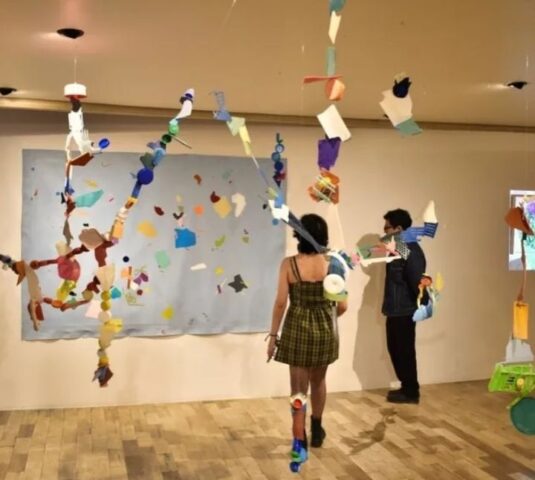
“In the days I had the opportunity to be present in Tijuana, that was the reaction I could perceive: a transition from aesthetic admiration to a deeper reflection on the content of the work. I also received a warm welcome from the organization and the chief curator of the Triennial; they showed great interest and admiration for my work and made me feel very welcome,” said Herencia.
To be part of the Triennial, the work was evaluated and selected by a board of curators. Of the 537 proposals received in the call published in May 2023, works by 86 artists from 15 countries were chosen, including Mexico, the United States, Germany, Brazil, Argentina, Colombia, England, Costa Rica, Cuba, Venezuela, Panama, Ecuador, Paraguay, Spain and Peru.
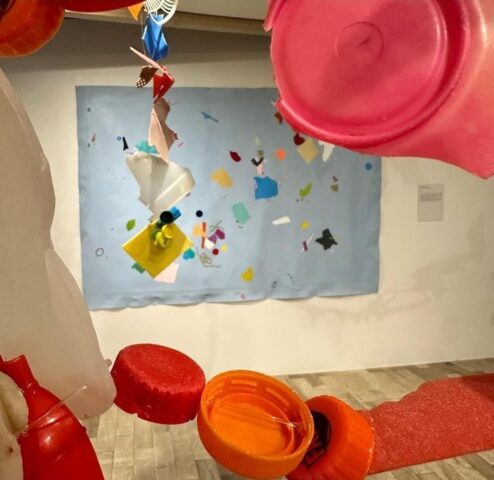

Karla Herencia was the only Costa Rican artist selected.
The chief curator of this edition is a prominent Brazilian professional, who has led the review and selection process of the artistic proposals, her name is Leonor Amarante.
In Karla’s opinion, participating in this triennial with a work on pollution “represents an opportunity to make visible a current problem and challenge and to connect with an international audience that shares these concerns”.
Now, what motivated or inspired you to create the work in Tijuana? The piece arose from a series of questions, curiosity about her surroundings and the constant action of collecting discarded plastics on the beaches of Costa Rica, a country that is often promoted as one of the best tourist destinations for its nature and beaches.
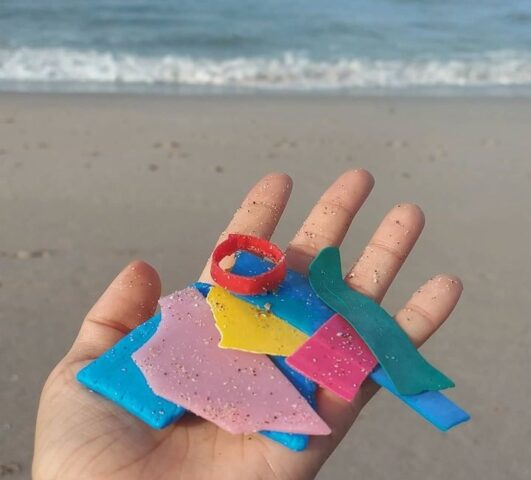
The work, What are these floating stains, integrates painting and found objects, giving shape to an artistic installation currently on display at CECUT, in Tijuana.
The project becomes a composition and chromatic record of materialities and fragments, establishing connections between complex realities and tensions that range from the seduction of textures to the different edges of human intervention.
With this work, the Costa Rican artist addresses the urgent problem of the tons of plastic scattered in the oceans, and through its multicolored and spatial structure, seeks to generate reflection on this problem.
Roots
Karla Herencia, lived her first years of life in the province of Limón, where she has vague memories, but full of warmth, for example, playing on the beach and singing, in addition to the dancing of her neighbors.
When she was four years old, her parents decided to move to San José, with that change, the sounds, the landscape and many other things also changed.
Where in Costa Rica are you located now?
She grew up in San Jose, but due to the death of his father and several personal situations, she decided to move near the sea, a desire she had always had.
Various circumstances made it possible for him to move to the Cóbano area for a few months. For about two yearss he has been living in the Nicoya Peninsula, in Puntarenas.
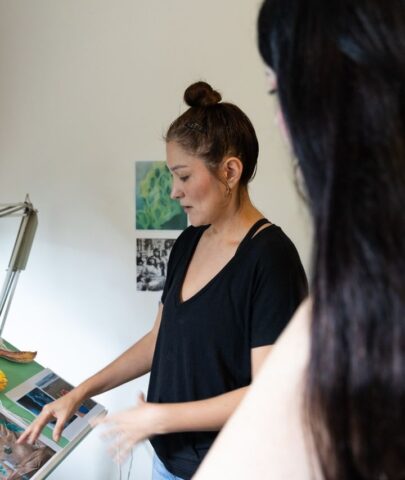
Teachings
There are teachings from our parents that last a lifetime… For artist Karla Herencia, one of the most beautiful teachings from her parents “it is the willingness to learn, the humility to recognize that there is always something the other can teach you. They both taught me to pursue my dreams. From my mom I learned: perseverance and resilience; she lived through difficult situations as a migrant and single mother, but she always found alternatives to get ahead, reinventing herself every time it was necessary. Her determination also taught me to be responsible. From my dad I learned: to be free and authentic with myself, to not live always looking to please others. He taught me to say what I think and to understand that my first responsibility is to myself; only from there I can take care of others. With him I did my first watercolors at a very young age; art and painting were a space to liberate, enjoy and share,” she said.
Herencia is a woman who is inspired by Costa Rica’s wealth of contrasts, especially living on the coast.
In that sense, she appreciates the exuberance of nature, its vitality and how everything is in constant interaction, from the ocean to the life that emerges around her. “This leads me to reflect on our ability to adapt and be flexible in the face of new challenges in the world, a characteristic that I see reflected in nature itself. I also find inspiration in everyday details, those elements that often go unnoticed: a stone, the reflection of a shell in the sun, or the way the sea foam fades. They are small ephemeral scenes that remind me of the beauty of the simple and fleeting. On the other hand, I deeply appreciate the fact that Costa Rica has no army, although this is not directly related to my artwork, it is something that makes me feel pride and gratitude for my country”.
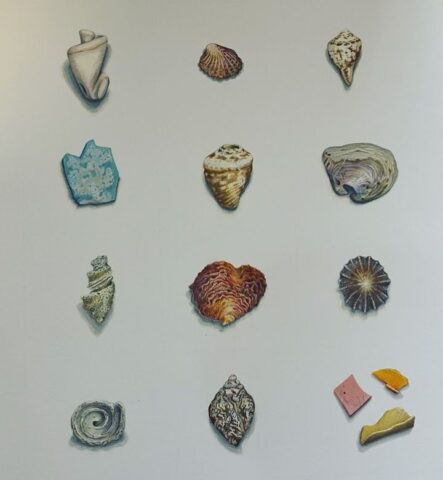
Personal definition of art and the impact of practicing it
In Karla’s opinion, art is a space of resistance, “one of the few places where we can still challenge the dominant logics that govern our society. Difficult it is, but not impossible… defining art in a conversation or interview implies choosing an approach and that limits its changing and challenging nature”.
In her artistic practice, art is a kind of interface that allows connecting experiences, images and sensations that would otherwise remain isolated. “These connections open up dimensions of knowledge that bring us closer to others as well as to ourselves.
In a world that increasingly idealizes efficiency and productivity, art becomes a refuge for the “useless,” in the best sense of the word. It is a space for pause, curiosity and questioning the unquestionable. I do not seek to create “style”; I think that style is a social and market trap. Art, for me, is freedom, research and intention. Some things I do will fall within the framework of what the art world validates, and others will not. But that doesn’t stop my impulse to create, to invent games. I paint when I am sad and also when I am happy; sometimes, when I walk, I play at discovering a new way of stepping on the ground,” she explained.
By practicing art, Herencia notes that she has molded herself, and has learned to pay attention to things that would otherwise be seen as absurd or useless. “In a world where our desires and our time are constantly manipulated by the logic of the useful, art reminds us of the importance of freedom, incoherence and curiosity. It is a journey towards self-knowledge and a way to imagine other ways of being in the world.”
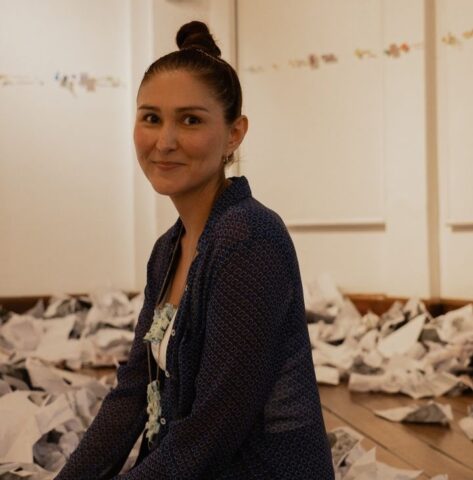
What or who drew you to the world of art and design?
Her parents were the ones who opened her path to art. Although neither went into art directly or professionally, Karla noted that they both had a unique sensibility: “My mom always liked to draw and dance, although she rarely allowed herself the time to do so. My dad enjoyed watercolor and music. They both loved to read, and when they met while studying in Russia, they shared their time visiting museums and attending the theater. My parents, for better or worse, were always dreamers. They gave me the ability to imagine and dream.”
Formative and professional approach
Since she was a child, the Costa Rican artist has explored various artistic expressions through free courses and drawing and painting classes in artists’ workshops.
When she entered the National University, she initially studied Performing Arts and spent a year in that career. “The performing arts made a lot of sense to me, because at school I attended classes in independent theaters. I found theater enchanting: the work with the body, the interaction with the other, the closeness with people… all this helped me a lot. In addition, it combined body and verbal language, creativity and a series of performative resources that, even today, continue to be of great interest to me”.
In a formal way, she studied Art and Visual Communication at the National University of Costa Rica, where she deepened her artistic training and developed a more solid and professional basis for her practice.
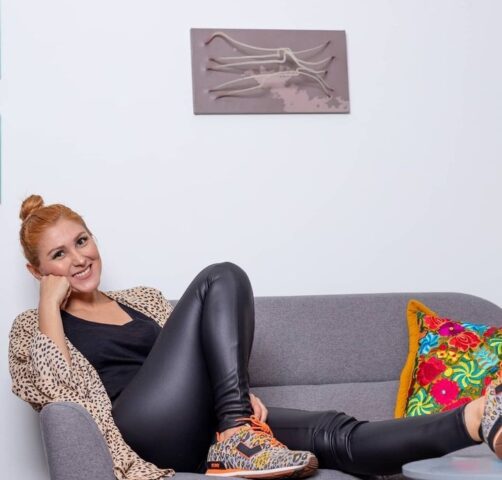
First, her focus was on Environmental Design, which has to do with the design of spaces, then she switched to specializing in Painting. “I have always complemented my training by learning about other techniques and areas such as ceramics, textiles, photography, among others.”
She then continued with postgraduate studies, obtaining a master’s degree in Project Management and a bachelor’s degree in Teaching.
Who has given you the knowledge you have today about art?
She has learned from many people, starting with his parents, Lurdes Herencia and José Carlos Vargas, as well as university professors such as Manuel Zumbado, Adrián Arguedas and Robert Rodríguez.
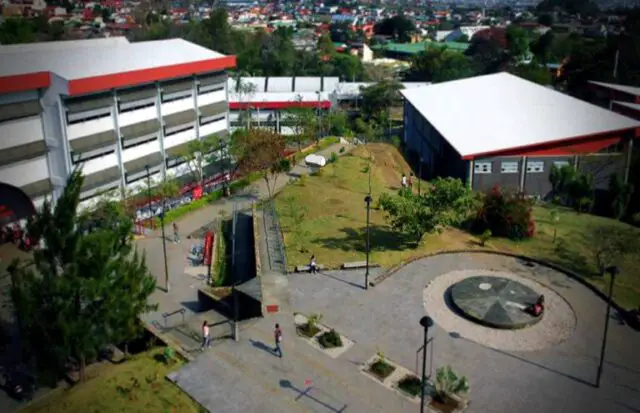
Herencia emphasized that she has also learned a lot by talking with colleagues and friends such as Andy Retana, Anna Matteucci, Daniela Martén, Marta Rosa Cardoso, Sofía Villena, Rolando Castellón, Luis Fernando Quirós, among many other people with different perspectives.
“It has been valuable to learn from my students as a professor at the National University of Costa Rica and from the people I have met in artistic residencies such as Dos Mares in France and Bulegoa in Bilbao. On the other hand, have been fundamental for me theorists and artists whom I have met through their works and their ideas, although not personally, among them are Anna Maria Guasch, Lucy Lippard, Donna Haraway and Sara Ahmed, as well as artists such as Louise Bourgeois and Eva Hesse, whose works have been a deep source of reflection and learning” she mentioned.
What are the themes that inspire her works?
Karla’s works explore themes such as the relationship between bodies and objects, the monstrous, fragility and transformation, focusing recently on the territory and elements of the landscape from a post-natural perspective.
she said that, many times, his work arises from personal and biographical experiences, which, although she does not always communicate explicitly, are latent in his projects.
Her work as an artist is in constant transformation. “If I had to describe it more specifically, I would say that I use a variety of techniques: I work with painting, drawing, video art, found objects, soft sculptures, textiles, photography, organic materials, texts and performative actions. Each of these elements allows me to explore different facets of my ideas and create pieces that mutate and transform.”
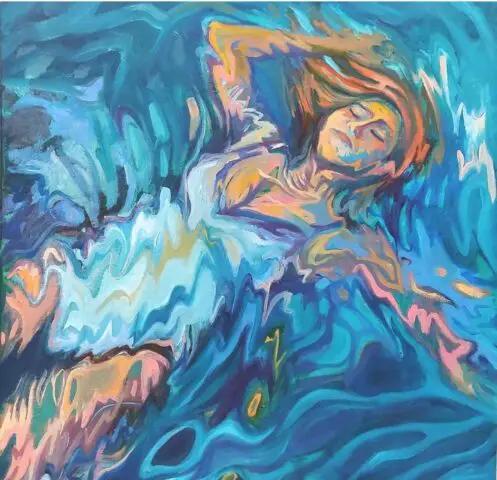
Regarding her work experience, she has experience in various areas related to art and culture.
She has worked as a teacher, in research and artistic extension. She has extensive experience in the production and management of cultural projects. She has also developed exhibition curatorial projects, which has allowed her to explore different approaches and visions in art.
What can you tell us about making art today?
For her, there is no single way of making art today. The way each artist approaches her practice depends on her purpose, her life circumstances and her personal vision.
“In my case, making art has required much more than creativity. I have had to develop management, organizational and production skills, and hold on to something that oscillates between perseverance, rebelliousness, stubbornness and, perhaps, a touch of madness. My mother often says, half jokingly, that she doesn’t know if I found art or if art found me, like an oasis in which my way of being finally found a space,” she said.
Making art today involves many challenges, “especially in a country like Costa Rica, where there are many talented artists, but few opportunities for a decent livelihood. There are few collectors and there are not always working conditions that value art as it deserves…
We live in an age that idealizes the rapidly reproducible: fast food, fast fashion, mass consumption and cost-cutting at the expense of quality. Art, at least as I conceive it, follows another rhythm; it implies a slower process, of reflection, of deep connection with the materials and the creative process. In a world that promotes immediacy and speed, art becomes an act of resistance, a reminder that there are other ways of living and doing”.
Karla emphasized that there is a double discourse in the Central American country regarding the lack of real and structural support, i.e., that as musicians are paid per concert, visual artists should be paid the same.
“I have seen firsthand how many institutions want to organize cultural and artistic activities, but their budgets do not include payment to artists. They pay for the rental of awnings, chairs, tables and graphic design, but the artists are expected to contribute their time “for the love of art.”
As for the digital era, she said that digital platforms have allowed a certain democratization to make projects and works known, but there is a problem, that here visibility does not always translate into sustainability.
Artistic success
Speaking of recognitions or awards… With the video art Tálamo, which emerged from an artistic research project financed by the “Iniciativas Interdisciplinarias” fund of the Universidad Nacional, Karla’s team achieved something very special. “We developed this project with the En Fuga collective, a group made up of graduates and academics from the National University.”
Tálamo received in 2021 the recognition for best experimental short film at the Veracruz World Film Festival, Mexico.
It also received an honorable mention at VALOARTE, in the 2014 edition.
She highlighted that she has gone through rigorous selection processes, such as when she was selected by a jury for a residency in Bilbao with Bulegoa Z/B, and in the Tijuana Triennial.
Exhibitions
In Costa Rica, she has exhibited at the Museum of Contemporary Art and Design, the Museums of the Central Bank, the Calderón Guardia Museum and Teorética, among others.
Recently, on November 10, he completed his exhibition “Weaving with the sea” at the Regional Museum of Cartago.
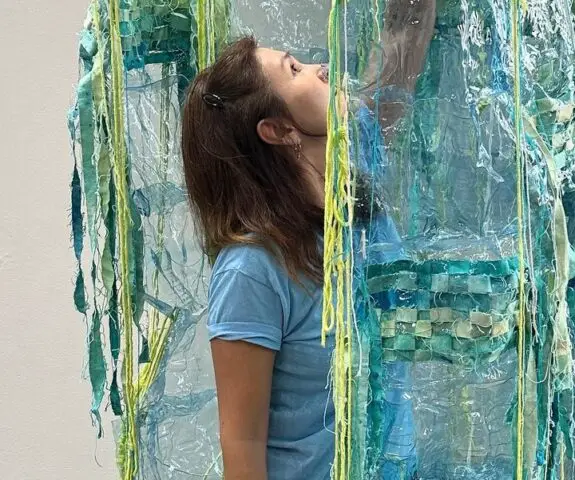
De manera internacional, ha tenido la oportunidad de mostrar su trabajo en Guatemala, República Dominicana, Bilbao (País Vasco) y México.
Actualmente, se encuentra planificando una muestra en Bélgica, un proyecto aún en desarrollando.
¿Cuántas obras ha pintado o elaborado?
La artista tica, comentó que no lleva la cuenta exacta de cuántas obras ha pintado.
Algunas obras están inventariadas, pero muchas otras no. “Hay ideas y piezas que nunca llegan a formar parte de proyectos y quedan en ese limbo de obras que no he mostrado y que no sé si alguna vez mostraré”.
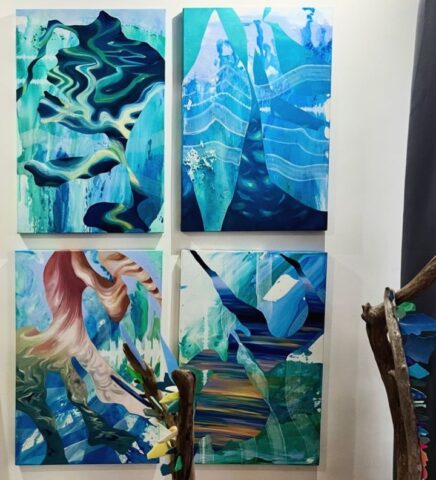
Internationally, she has had the opportunity to show her work in Guatemala, Dominican Republic, Bilbao (Basque Country) and Mexico.
She is currently planning a show in Belgium, a project still in development.
How many works has she painted or elaborated?
The Costa Rican artist commented that she does not keep an exact count of how many works she has painted.
Some works are inventoried, but many others are not, “There are ideas and pieces that never become part of projects and remain in that limbo of works that I have not shown and that I don’t know if I will ever show”.
The most significant work or works, highs and lows…
One of the most significant works for Karla is the one that is currently in the Tijuana Triennial, which is called “What are those spots that float?” This piece brings together elements that she collected during her walks on the beach over the course of approximately two years.
The conceptual development took that same time, and although the actual execution took months, -sometimes the hardest thing was to reach clarity in the ideas. It has been a process of ups and downs, where every step has been a challenge towards that clarity.
She has a very significant project called Corpórea Resistencia, which includes several important works for her, to mention one, “Bezoar”, created in 2015, “it is a piece that I return to in different ways; I feel it is an open path that I want to continue exploring. Bezoar has something that always invites me to revisit it and reconsider its meaning in my practice.”
Bezoar, is defined by Herencia as a concretion of varied nature, found in the stomach and intestine of some mammals, composed of organic or inorganic matter that the body cannot digest.
A look towards the future
The artist considers that she still has a long way to go, she has many dreams and projects in mind, such as, for example, that her work reaches more people and that she can also take it to other international platforms; create projects with other artists that link science and art.
Currently, he has several projects underway and future exhibitions. At the Cultural Center of Spain in Costa Rica, she is participating in the group exhibition 40 Years of Spanish Cooperation in Costa Rica, which is open to the public since October 29, 2024 and will be open until February 23, 2025.
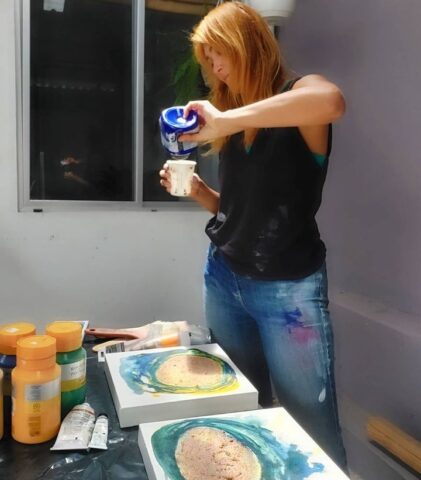
It is also part of the 2nd International Pictorial Triennial at the Tijuana Cultural Center, which will be open until February 2025.
Soon, he will participate in a group exhibition organized by an independent space Abra Espacio, in San Jose. She will be sharing the exact dates on her Instagram account, @karlaherencia.
Essence of the artist
Talking and conversing with Karla Herencia, we also learned that her pillars are her family and closest friends. Another fundamental pillar is the freedom to create and to be authentic and sincere with herself, “which is what allows me to stay true to my essence and my path in art. Time for myself is also essential. Although I enjoy being surrounded by people, I need moments of solitude to connect with myself, and I really enjoy my own company.”
Among other details is that not only art is part of her life… She likes to swim, read, dance or just play around. She also enjoys meditating and giving herself space to write. Walking is another activity that connects her with her environment and with herself; “it gives me the space to silence the noise, to feel, to think”.
And something very special is that she collects things that she finds, which she calls “clues”, “they are elements with a kind of randomness but that for me took on meaning or awakened my curiosity. I also have the hobby of continuing to feed a stamp collection that my father started”.
Finally, the Costa Rican artist expressed several messages both for those who are starting in art and for all citizens of the world in general.
For those who are starting out in art… “if the awards come, well, they are welcome. But they should not be the compass that guides our work; the important thing is to be honest with what we want to explore, investigate and express.
He stressed the importance of freedom and curiosity. “Keep curiosity awake and give ourselves the freedom to not always have to fit in, to constantly discover ourselves without being trapped in categories or imposed expectations. This does not mean living unconsciously; on the contrary, it means approaching ourselves and others from more honest places. In a world full of discourses about production, speed, efficiency and utility, it is easy to get caught in these traps. My invitation is to look for spaces of freedom to connect with who we really are, without rushing or impositions”.
If you want to know every step of the artist, you can visit her website: karlaherencia.art and follow her on her Instagram account: @karlaherencia.art.

